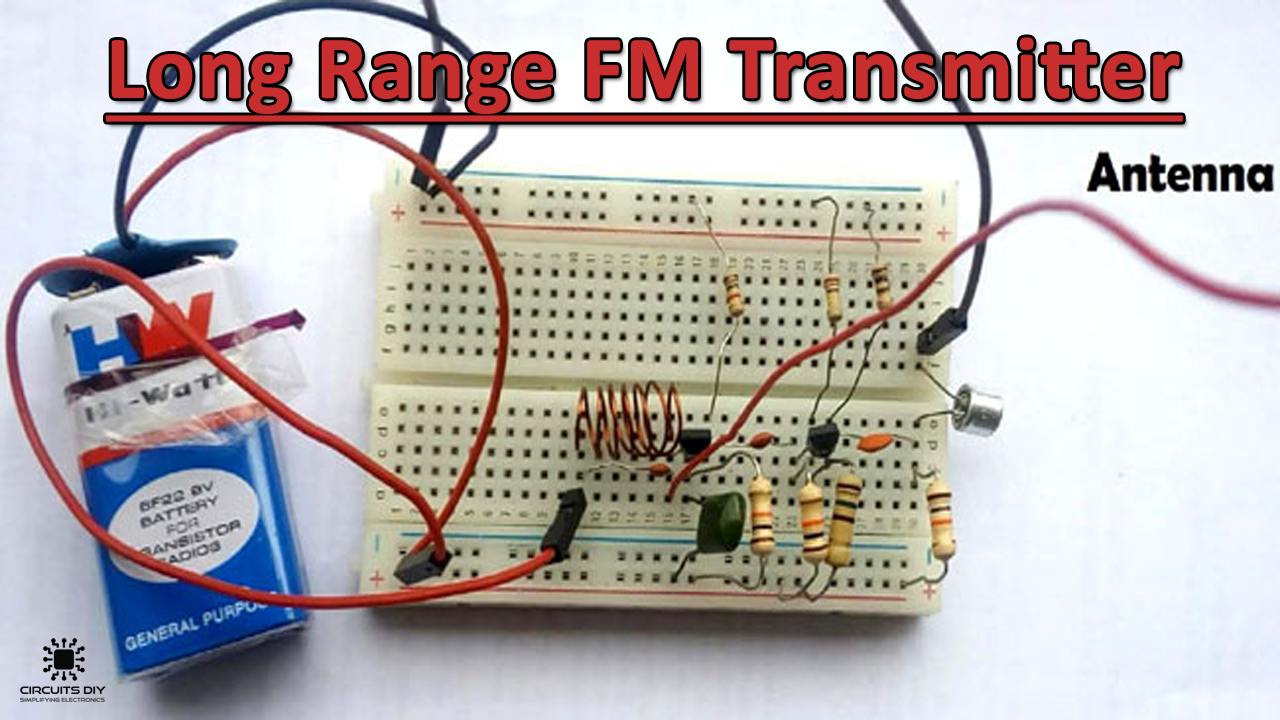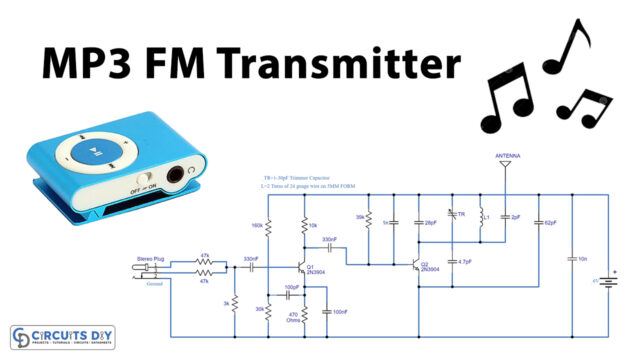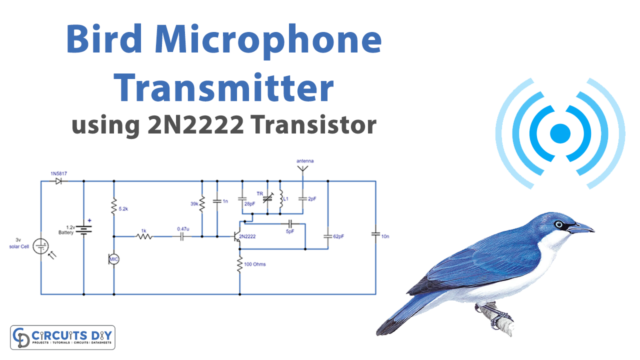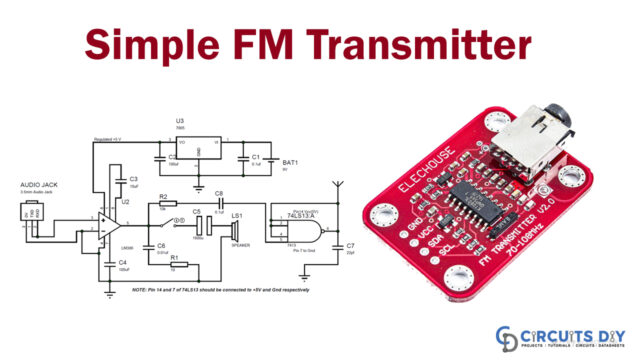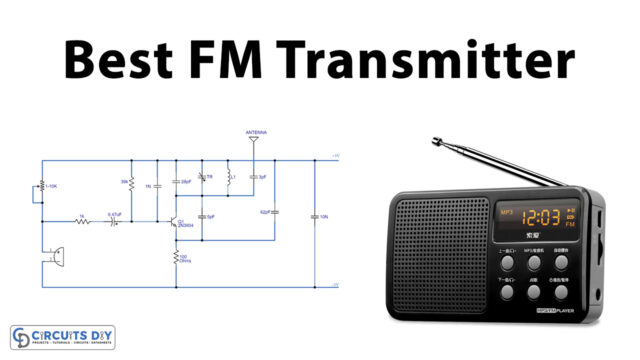In this tutorial, we are developing a project for a “Long Range FM transmitter Circuit”. This is an entirely steady, symphonious free, long-range FM transmitter circuit that can be utilized for FM frequencies somewhere in the range of 88 and 108 MHz. This can cover 5km territory (the area where you want to broadcast the sound).
This circuit can broadcast your voice around your home. We can likewise say it entire house FM transmitter. The yield intensity of this long-range transmitter is around 1 W, however, it can be higher on the off chance that you use transistors like KT920A, BLX65, BLY81, 2N3553, 2SC1970, 2SC1971.
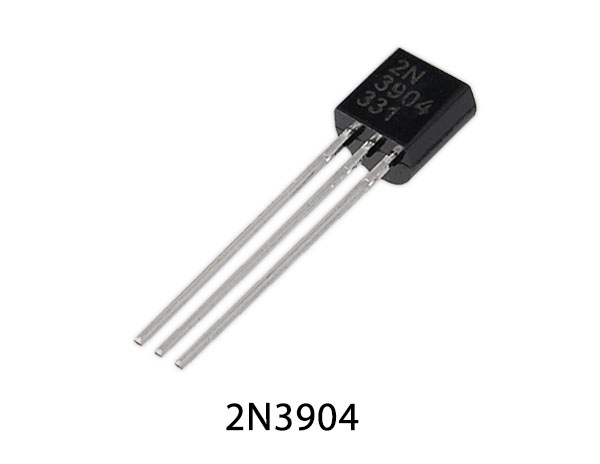
Hardware Components
The following components are required to make FM Transmitter Circuit
| S. No | Component | Value | Qty |
|---|---|---|---|
| 1. | Mic | – | 1 |
| 2. | Antenna | 12 in | 1 |
| 3. | Battery | 9V | 1 |
| 4. | Variable Capacitor | 5-30 pF | 2 |
| 5. | Transistor | 2N3904 | 2 |
| 6. | Ceramic Capacitor | 0.33µF, 0.001µF, 5pF, 22pF | 1, 2, 1, 1 |
| 7. | Resistor | 5.6K, 22K, 1K, 220R, 47K | 1, 1, 1, 1, 1 |
2N3904 Pinout

For a detailed description of pinout, dimension features, and specifications download the datasheet of 2N3904
FM Transmitter Circuit

Working Explanation
In this portion, we are discussing the operation of the circuit “FM transmitter”. In this transmitter circuit, we have used a few components like resistors of 5.6 K, 22 K, 220 R, and 47 K, capacitors of 0.33 µF, 0.001 µF, and 5 pF, a variable capacitor, a 9 V battery, a 12-inch antenna, and mic. We have also used two 2N3904 transistors. Here is a 1.5V FM transmitter circuit diagram. This circuit is utilizing a 1.5-volt DC battery, you can likewise utilize a 1.5V watch battery to control the circuit. L1 is equivalent to 5 turns of 0.7 mm enameled wire twisted on a 3 mm structure. This remote transmitter can transmit a distance of 30 meters.
Applications and Uses
- A long-range FM transmitter circuit can be used for FM frequencies somewhere in the range of 88 and 108 MHz.
- It can be used in broadcasting your voice around the place where you want to communicate.


